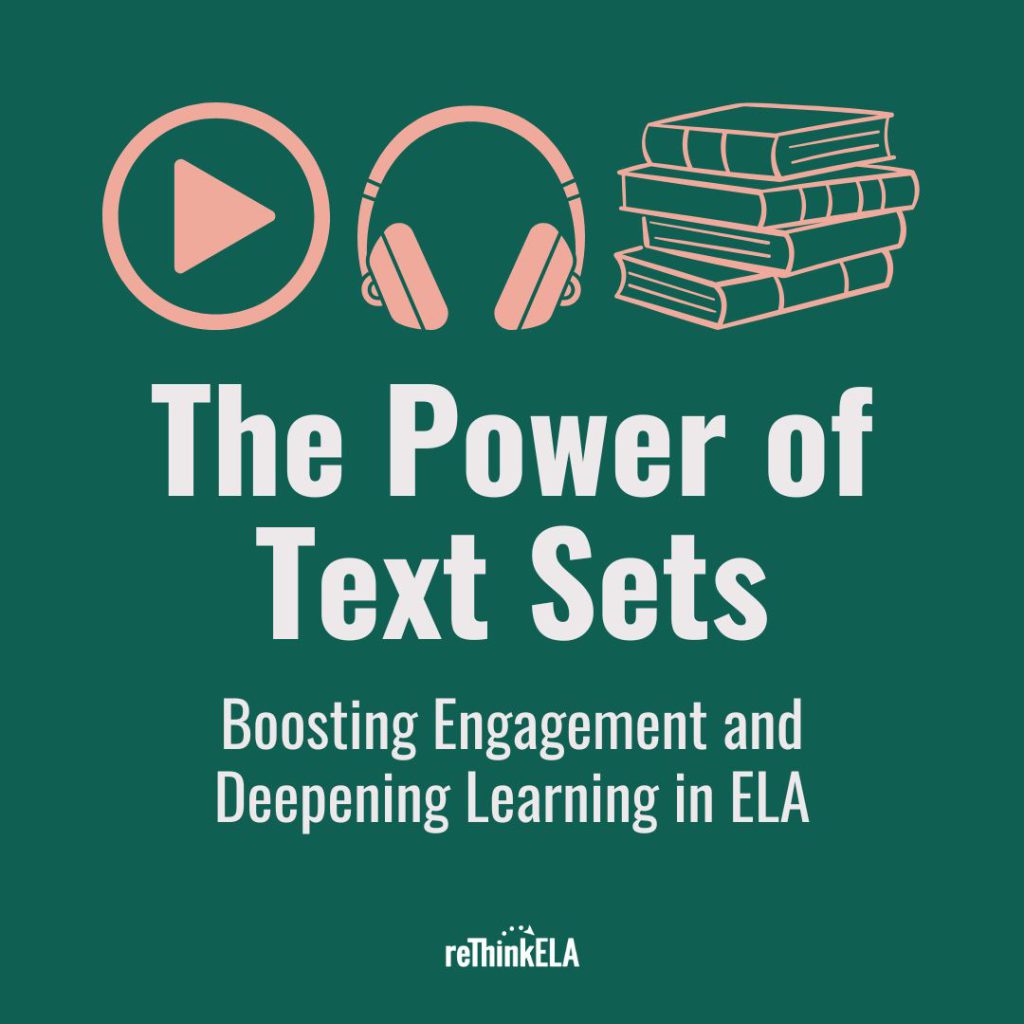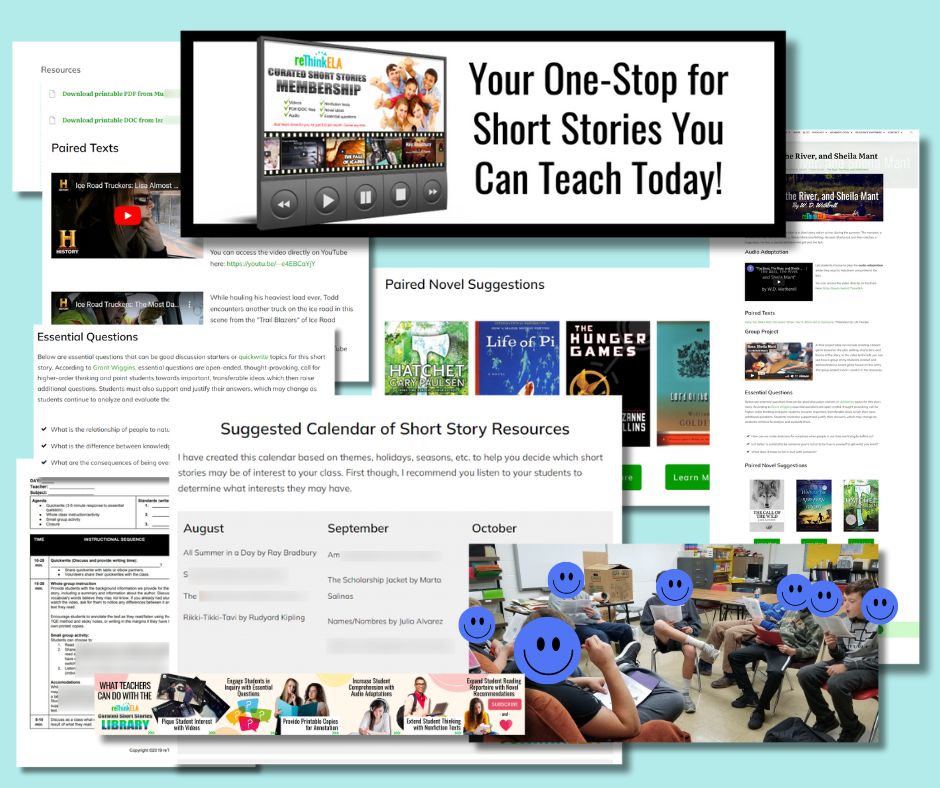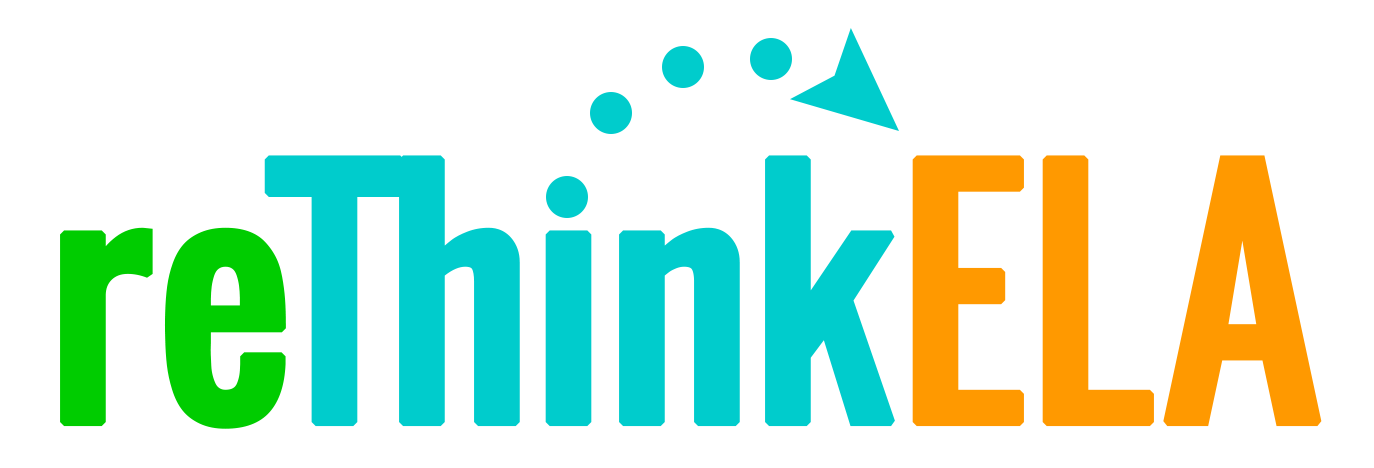
For years, traditional secondary ELA teachers have relied on the “one novel per quarter” model—pacing students through a single canonical text with occasional supplemental worksheets or isolated nonfiction articles. I remember this model from my days as a student — and we’re not going to talk about how long ago that was. But as teachers know all too well, a single text often can’t meet the needs, interests, or reading levels of every student in the room. That’s where the power of text sets comes in—and it’s also what makes the Curated Short Stories Library such a powerful tool for increasing engagement and improving outcomes in your classroom.
What Are Text Sets?
Text sets—also referred to as thematic collections, multimodal sets, or intertextual groupings—are “a purposeful and differentiated collection of resources (print, non-print, classic, contemporary, fiction, nonfiction) gathered on a topic, theme, essential question, or core conceptual idea” (Elish-Piper et al., 2014; Freeman & Hardin, 2024, p. 2; Woodruff & Griffin, 2017). Instead of relying on a single text to carry the full weight of a unit, text sets create opportunities for students to explore a topic from multiple perspectives and through a variety of genres, formats, and reading levels.
This approach is more than just engaging—it’s backed by decades of research. In a comprehensive literature review of over 100 peer-reviewed sources, Freeman and Hardin (2024) found that text sets promote student engagement, literacy growth, comprehension, critical thinking, content knowledge, and even social-emotional development.
The Power of Curated Collections
The Curated Short Stories Library was designed with all these benefits in mind. Each unit pairs a high-interest, thematically rich short story (that’s been taught in classrooms around the country, often for years) with supplementary texts—nonfiction articles, poetry, visual media, and more—that support deeper comprehension and connection. This structure reflects what Freeman and Hardin (2024) call a “text set philosophy,” which emphasizes choice, accessibility, and perspective-taking. This is the essential work of ELA that Reynolds (2022) describes as “adapting theoretical ideas to serve the needs of students, while working within existing curricular constraints and resources.” Our library can help you expand those resources.
For example, a short story exploring identity might be supported by a student-friendly article on social media and self-perception, a spoken word poem about belonging, and a reflective journaling prompt. This kind of scaffolded learning experience allows students to “read, learn, synthesize and deeply understand information” in a way that single texts rarely achieve (Beck, 2014, p. 13, as cited in Freeman & Hardin, 2024).
Engagement and Motivation
The literature is clear: students are more engaged when they have access to varied, relevant texts. Traditional textbooks and single-source curricula are often perceived by students as boring, too difficult, or disconnected from real life (Ivey, 2002; McGlynn & Kelly, 2019). Text sets offer an antidote to that boredom. They allow students to “see themselves in the text,” increasing motivation and encouraging further reading (Freeman & Hardin, 2024, p. 7).
In the Curated Short Stories Library, texts are selected not only for academic value, but also for their relevance to the lived experiences of students. Whether students are drawn to horror, humor, history, or human rights, each story is accompanied by thoughtfully paired readings that extend interest and deepen understanding.
While traditional textbooks have long included paired readings or thematic groupings, they often fall short in providing the variety, flexibility, and student engagement needed in today’s classrooms. The Curated Short Stories Library takes the concept of text sets to the next level by offering varied, multimodal resources that are ready for immediate use. Unlike standard textbook offerings, this library includes not only high-interest short stories, but also printable texts, video and audio adaptations, essential questions, and carefully chosen nonfiction and media texts that deepen understanding and spark discussion (Woodruff & Griffin, 2017). Even better, if your first choice doesn’t work with a particular group of students, the library provides additional options that may work better for that group. And if that doesn’t work, you can always reach out to me for help! Whether students learn best by watching, listening, reading, or annotating, the library supports all learners—without adding hours of prep time to your plate. In short, it’s everything we hoped textbooks would offer—only better.
Comprehension and Critical Thinking
Research also shows that text sets build background knowledge and improve comprehension—especially for students who struggle with grade-level texts (Soalt, 2005; Ciecierski & Bintz, 2017). When students encounter the same theme or concept through a series of scaffolded texts, their understanding becomes both broader and deeper. This approach encourages students to make intertextual connections, analyze author choices, and evaluate conflicting perspectives—skills central to college and career readiness.
The Curated Short Stories Library does this work for you. Each unit is thoughtfully arranged with an anchor text and “subsidiary” texts—what Freeman and Hardin (2024) describe as “knowledge builders” (p. 4). These texts are chosen to reinforce key vocabulary, build schema, and support comprehension through multiple formats and genres.
Supporting Diverse Learners
One of the most powerful findings in Freeman and Hardin’s (2024) review is that text sets are particularly effective at supporting equity and inclusion. Generative text sets—those designed around themes of conflict, identity, or justice—help marginalized students see themselves reflected in the curriculum. They also promote empathy, advocacy, and critical conversations around social issues (Souto-Manning, 2015; Dodge & Crutcher, 2015).
Each story in the Curated Short Stories Library was chosen not just for literary merit, but for its capacity to spark discussion and reflection. Paired readings introduce students to voices across time, place, and perspective—aligning with Bishop’s (1990) theory of “mirrors, windows, and sliding glass doors.” Whether students are analyzing propaganda, watching a short film, or responding to a personal narrative, they are invited to engage both intellectually and emotionally.
Practical and Teacher-Friendly
One of the biggest barriers to implementing text sets is time. Many teachers want to curate meaningful collections but feel overwhelmed by the effort required. As Freeman and Hardin (2024) note, “The search for the perfect anchor and subsidiary texts takes time and effort” (p. 12). That’s exactly why the Curated Short Stories Library exists: to give teachers immediate access to high-quality, ready-to-use sets built around classic and contemporary stories.
Each unit includes:
An anchor short story with teaching notes
Supplementary texts (nonfiction, poetry, multimedia)
Essential questions and discussion prompts
Writing tasks and project ideas
Standards alignment and vocabulary support
And because the library is regularly updated, teachers can rely on what Griffith (2018) calls “constant curation”—ensuring that every story set remains relevant and responsive to students’ needs.

Conclusion: More Than a Library
The Curated Short Stories Library isn’t just a collection of texts. It’s a research-informed instructional strategy grounded in decades of educational theory and practice. As Freeman and Hardin (2024) affirm, text sets are “a staple in many K-16 classrooms” because they boost engagement, deepen learning, and support a diverse range of learners (p. 14).
If you’re ready to move beyond coverage and offer your students real opportunities to read deeply, think critically, and connect personally—then text sets aren’t just a trend. They’re a transformation. And the Curated Short Stories Library is here to help you make that shift.
References
Bintz, W. P., & Ciecierski, L. M. (2017). Hybrid Text: An Engaging Genre to Teach Content Area Material Across the Curriculum. The Reading Teacher, 71(1), 61–69. https://doi.org/10.1002/trtr.1560
Bishop, R. S. (1990, March). Windows and mirrors: Children’s books and parallel cultures. In California State University reading conference: 14th annual conference proceedings (pp. 3-12). https://files.eric.ed.gov/fulltext/ED337744.pdf#page=11
Deakin, K., & Eastman, G. (2019). Where’s My Happy Ending? Fostering Empathy through Conversations about Anxiety and Depression in Young Adult Literature. Language Arts Journal of Michigan, 35(1). https://doi.org/10.9707/2168-149X.2232
Dodge, A. M., & Crutcher, P. A. (2015). Inclusive Classrooms for LGBTQ Students. Journal of Adolescent & Adult Literacy, 59(1), 95–105. https://doi.org/10.1002/jaal.433
Elish-Piper, L., Wold, L. S., & Schwingendorf, K. (2014). Scaffolding high school students’ reading of complex texts using linked text sets. Journal of Adolescent and Adult Literacy, 57(7), 565–574. https://doi.org/10.1002/jaal.292
Freeman, G. G., & Hardin, B. L. (2024). Text sets: A comprehensive analysis of the literature. Current Issues in Education, 25(2). https://doi.org/10.14507/cie.vol25iss2.2122
Ivey, G. (2002). Getting Started: Manageable Literacy Practices. Educational Leadership, 60(3), 20–23. https://citeseerx.ist.psu.edu/document?repid=rep1&type=pdf&doi=f06abe7bdd09bd5817e57815d705f62218195574
Mcglynn, K., & Kelly, J. (2019). Supplementing the textbook effectively to encourage student growth. Science Scope, 42(5), 36–41. https://www.jstor.org/stable/26898885
Reynolds, D. (2022). What is an ELA text set? Surveying and integrating cognitive, critical and disciplinary lenses. English Teaching: Practice & Critique, 21(1), 98–110. https://doi.org/10.1108/ETPC-06-2021-0075
Soalt, J. (2005). Bringing Together Fictional and Informational Texts to Improve Comprehension. The Reading Teacher, 58(7), 680–683. https://www.jstor.org/stable/20204290
Woodruff, A. H., & Griffin, R. A. (2017). Reader response in secondary settings: Increasing comprehension through meaningful interactions with literary texts. Texas Journal of Literacy Education, 5(2), 108–116.
